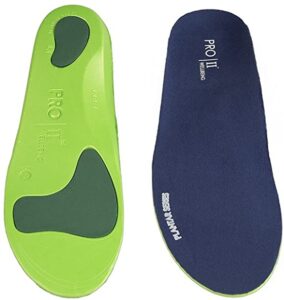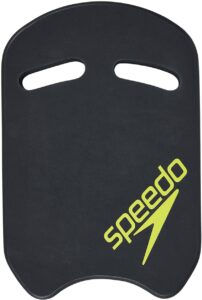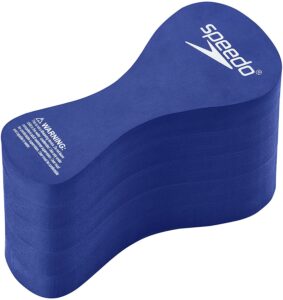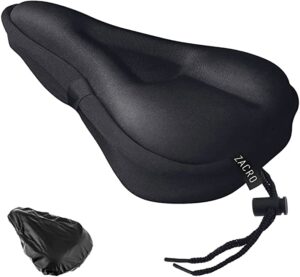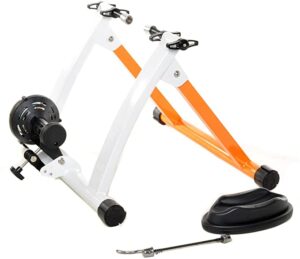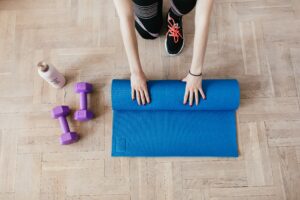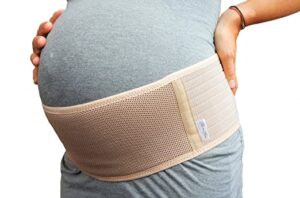You’re pregnant! Great news. You’ve been told to stay active but rest, eat well but avoid certain foods, sleep well but only in certain positions, avoid contact sports and heavy lifting but stay fit and certainly don’t take any medication or consume any alcohol. Ok, got it….but what happens when something gets in the way of all of that wonderful advice? What if you don’t fit the mould of the perfect pregnant woman?
One minute you’re happily exercising, the next minute you’re in pain, sat on the couch, eating biscuits like you’re participating in a sponsored snack-a-thon. It’s happened to a lot of ladies and the rule book doesn’t seem to cover this.
So, what are your options?
Well, it depends a little bit on what you were doing or what you want to do. Doing an exercise that you don’t enjoy is almost impossible because it is lacking one key ingredient; motivation! So, we’re going to look at the most common forms of exercise that ladies have told us that they do or did during their pregnancies and how we can adapt them when things go a little wrong.
Now, when we say wrong, we’re talking; Pelvic Girdle Pain, lower back pain, Sciatica, Hip pain, pubic synthesis dysfunction or groin pain, all those horrible conditions that can often be associated with pregnancy (in fact all of those conditions that can make you feel utterly miserable but are told, ‘don’t worry, it’ll go once the baby arrives’)!!
First up…..walking (or jogging)
The majority of women that we spoke to said that walking became their main exercise during pregnancy. The first mistake that people make when increasing the amount of walking they do is wearing the wrong footwear! I cannot emphasise enough how important good shoes are! Supportive and cushioned trainers have been linked to a reduction in plantar-fasciitis, lower back pain and pelvic related pains. If you’re not in the position to buy new trainers (good ones come with a rather hefty price tag) then the other option is, good quality insoles (like this). Insoles can sometimes take a bit of getting used to, but evidence has shown that they can help to reduce symptoms associated with things like pelvic and lower back pain.
If changing footwear doesn’t have a big impact then your next option is to purchase a pair of hiking poles. Using poles is thought to take pressure off the back, hips and feet and create more of an even weight distribution and gait. You can buy poles for a reasonable price online, they don’t have to be anything fancy, just make sure they are adjustable (they also look way cooler than crutches).
If you’re usually a keen runner / jogger but pain (or toilet visits) is getting in your way, then another option you have is Nordic Walking. Nordic Walking is effectively power walking using ski poles. It is a popular and fast-growing type of exercise in Northern Europe that has been shown to exert beneficial effects on resting heart rate, blood pressure, exercise capacity, maximal oxygen consumption and quality of life. Studies have looked into the effects of Nordic walking on lower back pain and the results have been good. In fact, this study from 2019 found that Nordic Walking provided greater and faster benefits than standard walking and was found to be an extremely useful tool in weight loss and symptoms associated with obesity. There are lots of videos online, like this one, that teach you the basic Nordic Walking techniques (or have a look for a local club). You can buy your poles online here also.
Next up…..swimming
Now, swimming isn’t always everyone’s favourite sport. There is more to it than your standard walk around the block. You have to pay to go, you have to get there and back, you have to get undressed and then redressed. Then there’s the washing of the hair, sorting your wet belongings and whether to do it before work (or the school run or the 10 million other jobs you have) or after. Putting all that to one side, the benefits of swimming throughout pregnancy are pretty huge.
This study found that ladies who participated in swimming during their pregnancy were significantly more likely to have intact perinea after childbirth. Another study found that women who perform moderate physical exercise in an aquatic environment are at lower risk of Postpartum Depression, and this study found that swimming during pregnancy alleviates pregnancy-associated decrease in memory! Swimming has also been found to help with pelvic girdle pain, lower back pain and prevention of antenatal weight gain. Then there are all the other health benefits associated with swimming, improving maternal body image, reduction of stress on the joints, increasing physical strength, improving cardiovascular health and general fitness.
But what if you’re not a strong swimmer or find certain positions painful?
There are things that can help. Firstly, try a kickboard. A kickboard is a float that you hold and it allows you to just use your legs for swimming. Sounds lazy? It’s not, it’s actually really hard work and gets the heart pumping. It’s also a great way of swimming without having to put your head in the water (if that’s your way of swimming or you don’t feel like washing your hair that day). Using a kickboard can allow you to do a narrower leg kick or just front-crawl leg kick (which can help if you have pelvic girdle pain).
Secondly, try an aqua class. They don’t involve swimming as such and you can usually find antenatal aquatic classes at your local baths. These classes will still get the blood pumping and work up a sweat but at much less impact than other land-based classes. This will help if you have (or are at risk of) prolapse, if you have PGP or lower back pain and / or hip pains.
Thirdly, try a Pullboy. This type of float sits between your thighs and is easy to grip. It helps to keep your legs afloat while just using your arms to swim. This means that you can rest your lower back and pelvis and avoid pains associated with their movements but still swim with a good stroke and work up a sweat!
Then there’s the option of…….biking.
Biking and pregnancy don’t always go hand in hand, there’s the issue of safety, risk of falls and getting knocked off. There’s the growing bump that gets in the way of your legs pedalling and then there’s the seat! If you have any sort of pelvic issues (or just further along in your pregnancy), then you’re very likely to find sitting on a bike seat very uncomfortable. Other than these minor(!) issues, cycling is a great way to keep fit and active during pregnancy because it is low impact, makes you sweat and raises your heart rate pretty quickly.
So, fear not, we have options for you…..
Try a spin class. Spinning is a really popular form of exercise and you get lots of different fitness levels and abilities in these classes. You can hide at the back or sit happily at the front. You can put as much or as little effort in as you please because its up to you how much resistance you add to your bike. If you find the seat uncomfortable you can fold up your jumper and sit on that or you can buy a gel cover (like this one) that you pop on at the start of the class.
If you don’t fancy the thought of heading to the gym each week (or a few times a week) then it is definitely worth investing in a Turbo Trainer. A Turbo Trainer allows you to connect your own bike at home so that you can pedal at speed, change the resistance and watch TV, all at the same time. You can set it up in any room in the house (as long as there is space to walk around it for a few months), you can add your gel seat cover to your own bike seat (or stick a cushion on there) and jump on any time you have spare energy. Turbo trainers come in lots of shapes and sizes. This one is popular due to it being quieter than some of the cheaper ones but if noise isn’t an issue then you could look at a less pricey option like this one.
I guess we should also mention Peloton Bikes, whilst we’re talking about safe biking options. Peloton Bikes are effectively Spin Bikes (but Spin is trademarked). They are stationary, at home bikes, with large touch screens. With Peloton you pay a monthly membership and get access to thousands of classes online (like having an instructor live in your house). Using a programme like this can help to keep you motivated and push you a little harder than you might push yourself (like you would in a class but you don’t have to leave your home). They are a great piece of fitness equipment and a great investment for when baby arrives (bike when the baby sleeps)?! But they come with a hefty price tag. Have a look at their website here.
Let’s not forget the usual suspects: Pilates and Yoga.
Pilates and Yoga are seen as a bit of a gold standard when it comes to pregnancy. There are lots of antenatal and postnatal classes available and there are a lot of research studies that have demonstrated the benefits of this type of exercise in pregnancy. This study found that prenatal yoga may help reduce pelvic pain and help to improve mental health conditions like stress, depression, anxiety that can be associated with pain in pregnancy. Yoga has also been shown to help with pain and pleasure at the delivery of the baby and with postnatal outcomes such as lower delivery times and obstetrical complications. Yoga comes with many options as well; you can do it in a class setting where equipment is usually provided as part of the cost. You can book 1:1 sessions in certain venues or sometimes from the comfort of your own home (for a more specific programme tailored to your needs and trimester) or you can do it following an online programme which you can do at home, at any time that suits you.
There are lots of Online Yoga programmes available, have a look at our Top 5 here (and why we love them)! You can also read our blog on how yoga can help in other ways.
Yoga is an exercise that needs little (to no) equipment. You can do yoga on your carpet at home or you can invest in a mat (mats make it a little easier as they stop you slipping). Have a look at the best Yoga mat options here. If you are suffering with back or pelvic pains then getting a yoga block can also help. Blocks can take some of the tension out of the stretches that you do and make positions a little more comfortable. Here is a good example of a yoga block that you can buy at a reasonable price.

Pilates – There is good evidence available to support the use of Pilates-based exercise during pregnancy for the treatment of many conditions, including pelvic related pains and lower back pains. Evidence has also shown that Pilates can also have a positive effect on the birth and the outcome following the birth. Antenatal classes will usually have alternative exercises put in for ladies suffering with back / pelvic / hip or other pains.
Attending an instructed class can be really helpful as all of the equipment is provided and you can let your instructor know about any symptoms that you currently have (they will then tell you how to adapt the exercises accordingly). If you are happier exercising at home then have a look at our Top 5 Online Pilates options here.
Purchasing some weights (like these) and / or bands (like these) might help in these sessions (but it is not essential) as you can just use things around the house also (tins of beans are a great starting weight).
Lastly, let’s talk about…..the gym.
Lots of ladies go to the gym before becoming pregnant and then carry on all the way through their pregnancy. This is a great way to keep fit, improve strength and also manage prenatal weight. Unfortunately, sometimes, injury or pains associated with pregnancy, can get in the way of your gym routine.
One option, if this is the case, is to speak to a qualified personal trainer (particularly one that specialises in prenatal training). They can put a programme together for you which will help you to avoid strenuous activities, involving certain muscle groups, which are associated with your pain.

If you have pelvic girdle pain then avoid exercises where you are on one leg. You might find that squats are ok, but keep your feet a little closer together. Avoid lunges, steppers, cross-trainers and twisting exercises. Usually static bikes / spin classes are ok as the pelvis is fixed but some ladies find the saddle uncomfortable (see above for advice on that). Try more exercises where you have your pelvis in a fixed position; 4-point kneeling or side lying (you can still add in arm weights in these positions). YouTube might just become your best friend through the next few weeks / months, there are some great videos for exercise ideas to prevent pelvic girdle or lower back pain. The general rule with PGP and back pain is: if it hurts, don’t do it!
Lower back pain follows similar rules to PGP but can vary a little more (depending on the cause). Some ladies find that being up and active helps their pain and it is worse when they sit / lie or are sedentary for any prolonged periods. Some ladies find that changing positions is worse, i.e. sit-stand, twisting, lying-sitting and some ladies just hate being on their feet! Adapt your exercise depending on your symptoms. If it hurts when you are stood up then do your exercises sat down. If it hurts when you bend, then do exercises that involve being upright (biking, squats, lunges etc. all involve a ‘straight back’).
One final tip is to try using a support belt when you are exercising, if you have back or pelvic girdle pain. This study concluded that wearing a support belt during pregnancy could have beneficial effects in women such as lower back and pelvic girdle pain alleviation, improvement of functionality and mobility, and reduction of risk of falls.
There are currently no studies to show which support belts work best or for how long you should be wearing them, so we have put together our top 5 choices (here) to help guide you based on what they can help with and what we like about them. They are a good investment and certainly worth a try if you have PGP or back pain.
In summary
If you suffer with aches and pains in pregnancy, this is totally normal, sometimes these aches or pains will ease, sometimes they wont. Nevertheless, exercise is good for you and your baby throughout pregnancy and there are lots of different exercise options for those who wish to stay active regardless of their symptoms. If there is anything you are unsure of regarding exercise then speak to your GP or midwife.

